
The Paris Motor Show in October 1984 saw the return of the glorious Testarossa as heir to the 512 BBi. Pininfarina’s design broke somewhat with tradition and was striking and innovative. The side intakes were larger than on the previous model and this constraint saw the introduction of the long side strakes that would become the Testarossa’s most recognisable feature. The evolution of the 12-cylinder boxer engine saw it equipped with four valves per cylinder: the most powerful engine mounted on a production sports car at the time of its launch.
The Testarossa was a model that took its name from the company’s history, being derived from the successful 500 and 250 Testa Rossa series of sports racing cars from the late fifties. The name Testa Rossa is Italian for Red Head, and refers to the colour that the camshaft covers were painted on the sports racing models. Naturally the modern bearer of the name followed suit with red painted camshaft covers. It made its debut in the glittering surroundings of the Lido nightclub on the Champs Elysées in Paris, on the eve of the 1984 Paris Salon, where invited press and guests were given a gala preview prior to its public launch the following day.
The Pininfarina designed replacement for the Boxer series was visually radically different from its predecessor, although it still featured a mid mounted flat twelve engine as its motive power. Gone was the sharp nosed wedge profile, to be replaced by a much softer rounded front end. The front wings flowed into one of the models most distinctive styling features, the deeply straked door panels that grew in width towards their trailing edge, before blending into very wide rear wings. At the rear, the paired circular tail light arrangement that had been a styling feature for over a decade was gone. In their place was a full width horizontally slatted satin black louvre hiding rectangular combination light units. The reason for the great rear girth and the body colour straked door louvres, was the twin side mounted water radiators which received their cooling air via the door intakes. The matt black egg crate “grille” in the nose of the car was a dummy to provide a link with Ferrari tradition, bordered by combination driving, side, turn indicator light assemblies, with paired headlights in retractable pods on the upper face of the nose. The repositioning of the radiators provided the benefit of additional luggage space in the nose, useable luggage space being something that had been a shortcoming of the Boxer series. Although the front track was only 12mm greater than that of the 512 BBi, the rear track increased by a massive 105mm, making the car wedge shape in plan rather than in profile.
One of the styling features that drew mixed reactions was the single exterior mirror mounted on the driver’s side screen pillar. Some people felt that the long twin aerodynamic support arms gave an unbalanced effect to the car, and a number of owners “corrected” it by adding a matching unit to the passenger side pillar. From the Geneva Salon in 1997, the single pillar mounted mirror was replaced by similarly styled paired units, mounted in the lower front corners of the door glass.
The bodies were mounted on a 2550mm wheelbase chassis that had factory reference number F 110 AB 100, with early cars in the odd chassis number road car sequence and later cars in the continuous number sequence. The construction followed the Ferrari principle of a tubular steel chassis frame with cross bracing, and sub structures, to support the engine, suspension, and ancillary equipment. The bodywork was mainly aluminium with steel doors and roof. The model was available in right or left hand drive form, and for the first time in a decade a USA market 12 cylinder Ferrari was produced, the Testarossa having been designed as a world market car from the outset. The standard road wheels were five spoke “star” pattern alloy, initially with a single central chrome plated nut on a Rudge hub, which was replaced by five bolt fixing during 1988, with concurrent changes to the interior trim. The model also featured a return to the unequal size front and rear road wheel rim widths, with 8J x 16″ front wheels and 10J x 16″ rear wheels, plus a space saver spare wheel in the front compartment. The wheels covered large ventilated disc brakes with twin hydraulic circuits, and servo assistance. All round independent suspension was via wishbones, coil springs and hydraulic shock absorbers, with twin rear units plus front and rear anti roll bars.
The engine was the first four valves per cylinder flat twelve cylinder configuration unit fitted in a Ferrari road car, but maintained the same cubic capacity of 4943cc, and 82mm x 78mm bore and stroke, of the 512 BBi model, and had factory type reference number F 113 A 000. It had twin belt driven overhead camshafts per bank, now driven directly off the crankshaft instead of via idler gears on the earlier Boxer models. The dry sump engine was longitudinally mounted in unit with the five speed transmission, in a very similar manner to that of the preceding Boxer series. It was fitted with a Marelli Microplex MED 120 B electronic ignition system and Bosch KE-Jetronic fuel injection, to produce a claimed 390bhp @ 6300rpm for European models, and 380bhp @ 5750rpm for US market models.
The model remained in production with very few visual alterations for seven years until the end of 1991, when it was replaced by the 512 TR, during which time 7177 examples were built in the chassis number range 53081 to 91923. A single spider example, with full folding roof, was built for the personal use of Fiat supremo Gianni Agnelli.
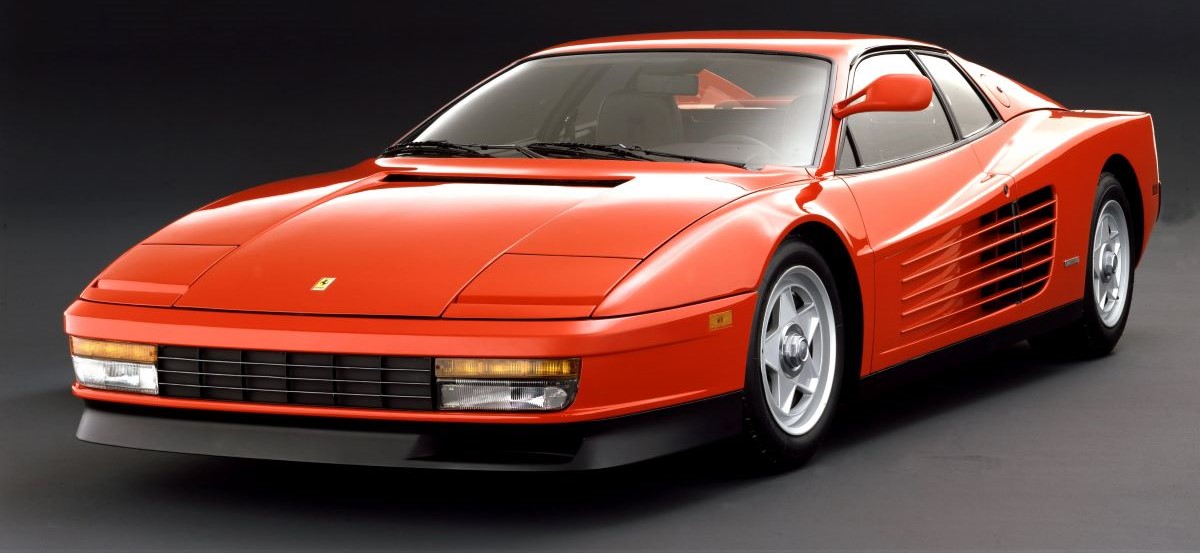
Specifications and Features
Engine
- Type……………………………..rear, longitudinal flat-12
- Bore/stroke……………………82 x 78 mm
- Unitary displacement……..411.92 cc
- Total displacement…………4943.04 cc
- Compression ratio…………..9.3 : 1
- Maximum power…………….287 kW (390 hp) at 6300 rpm
- Power per litre……………….79 hp/l
- Maximum torque…………..490 Nm (50 kgm) at 4500 rpm
- Valve actuation……………….twin overhead camshafts per bank, four valves per cylinder
- Fuel feed……………………….Bosch K-Jetronic mechanical injection
- Ignition…………………………Marelli Microplex electronic, single spark plug per cylinder
- Lubrication……………………dry sump
- Clutch………………………….twin-plate
Chassis
- Frame…………………………..tubular steel
- Front suspension…………..independent, unequal-length wishbones, coil springs, telescopic shock absorbers, anti-roll bar
- Rear suspension…………….independent, unequal-length wishbones, coil springs, twin telescopic shock absorbers each side, anti-roll bar
- Brakes………………………….discs
- Transmission………………..5-speed + reverse
- Steering………………………..rack-and-pinion
- Fuel tank………………………capacity 120 litres
- Front tyres…………………….225/50 VR 16
- Rear tyres……………………..255/50 VR 16
Bodywork
- Type…………………………….two-seater, berlinetta
- Length………………………….4485 mm
- Width…………………………..1976 mm
- Height………………………….1130 mm
- Wheelbase…………………….2550 mm
- Front track……………………1518 mm
- Rear track……………………..1660 mm
- Weight…………………………1506 kg (dry)
Performance
- Top speed……………………..290 km/h
- Acceleration
0-100 km/h…………………..5.8 sec
0-400 m……………………….13.6 sec
0-1000 m……………………..24.1 sec
Gallery

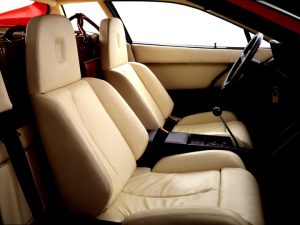
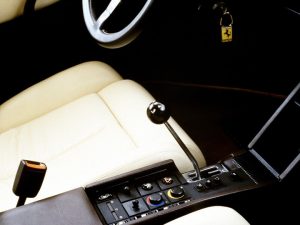
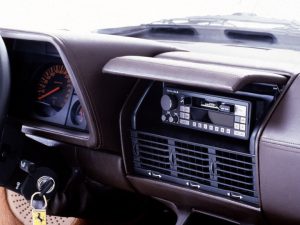

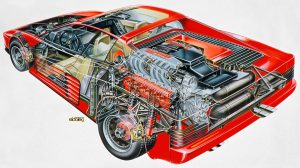
You must be logged in to post a comment.